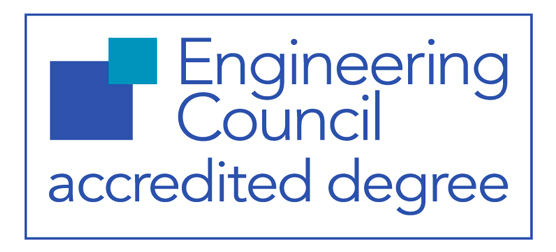Explore the First-class facilities at Swansea University,
a UK top 10 academic centre for advanced materials and manufacturing research.
{"id":1,"title":"Scanning 1","default":true,"thumb":"","img":{"src":"https:\/\/materials-academy.co.uk\/wp-content\/uploads\/2020\/12\/IMG_20201120_133349_00_018-scaled.jpg","width":2560},"position":{"yaw":0.235955181540699499009861028753221035003662109375,"pitch":0.157521599697805214645995874889194965362548828125,"fov":1.4274487578895309614068764858529902994632720947265625},"hotspots":[{"id":1,"type":"scene","title":"","position":{"yaw":0.1608765316379336951513323583640158176422119140625,"pitch":0.082255592145980216400857898406684398651123046875},"scene":{"id":"2","position":""},"popup":{"titleColor":"#000000","titleBgColor":"#ffffff"},"icon":{"url":"https:\/\/materials-academy.co.uk\/wp-content\/uploads\/2021\/04\/PrevScene_Arrow.png","width":"30","height":"30"}},{"id":3,"type":"text","title":"Time Lapse Analysis","position":{"yaw":0.685116448363768171248011640273034572601318359375,"pitch":-0.125687491464052669698503450490534305572509765625},"popup":{"titleColor":"#dd3333","titleBgColor":"#ffffff"},"icon":{"url":"https:\/\/materials-academy.co.uk\/wp-content\/uploads\/2021\/04\/Info_Spot.png","width":"30","height":"30"},"text":"<div class=\"iframe-wrapper show-modal\">\n<div id=\"custom-ifram\">\n<p>A lightbox and macro-lens camera setup is used to capture sample images at set intervals over time. These images can then be observed at a greater speed than the otherwise lengthy timescales of the experiment. This technique is typically used to measure the rate of coating failure mechanisms for organically coated metal samples. It is also commonly used to image the initiation and progression of corrosion mechanisms occurring on metal samples in both immersion and humid conditions.<br \/><br \/><b>Contact<\/b><br \/>Dr Calvin Richards -\u00a0<a href=\"mailto:c.a.j.richards@swansea.ac.uk\">c.a.j.richards@swansea.ac.uk<\/a><\/p>\n<\/div>\n<\/div>"},{"id":4,"type":"text","title":"The Scanning Kelvin Probe (SKP)","position":{"yaw":1.8908446700412593344253764371387660503387451171875,"pitch":-0.038544969801638018225276027806103229522705078125},"popup":{"titleColor":"#dd3333","titleBgColor":"#ffffff"},"icon":{"url":"https:\/\/materials-academy.co.uk\/wp-content\/uploads\/2021\/04\/Info_Spot.png","width":"30","height":"30"},"text":"<div class=\"iframe-wrapper show-modal\">\n<div id=\"custom-ifram\">\n<p><b>SKP<\/b><br \/>The Scanning Kelvin Probe (SKP) is a bespoke apparatus that measures the volta potential differences that arise between a sample and the probe using a non-contact vibrating capacitance method. The SKP provides real-time and precise micron scale measurements and is primarily used to interrogate the kinetics associated with the failure mechanisms of coated metal systems and evaluating the efficiencies of corrosion inhibitors. Other uses include contact potential\/work function measurements and 3D surface height scanning. All experiments can be conducted in ambient, humidity controlled and\/or gas controlled environments.<br \/><br \/><b>Contact<\/b><br \/>Dr Calvin Richards -\u00a0<a href=\"mailto:c.a.j.richards@swansea.ac.uk\">c.a.j.richards@swansea.ac.uk<\/a><\/p>\n<\/div>\n<\/div>"}]}
{"id":2,"title":"Scanning 2","default":false,"thumb":"","img":{"src":"https:\/\/materials-academy.co.uk\/wp-content\/uploads\/2020\/12\/IMG_20201120_133423_00_019-scaled.jpg","width":2560},"position":{"yaw":-1.655868148189217237131742876954376697540283203125,"pitch":-0.0199971111205581308922774042002856731414794921875,"fov":1.4274487578895309614068764858529902994632720947265625},"hotspots":[{"id":1,"type":"scene","title":"","position":{"yaw":-1.6434084777737751892345841042697429656982421875,"pitch":0.1477046394319785349580342881381511688232421875},"scene":{"id":"3","position":""},"popup":{"titleColor":"#000000","titleBgColor":"#ffffff"},"icon":{"url":"https:\/\/materials-academy.co.uk\/wp-content\/uploads\/2021\/04\/PrevScene_Arrow.png","width":"30","height":"30"}},{"id":2,"type":"scene","title":"","position":{"yaw":1.68467032502040847674606993678025901317596435546875,"pitch":0.134762036495924775181265431456267833709716796875},"scene":{"id":"1","position":""},"popup":{"titleColor":"#000000","titleBgColor":"#ffffff"},"icon":{"url":"https:\/\/materials-academy.co.uk\/wp-content\/uploads\/2021\/04\/NextScene_Arrow.png","width":"30","height":"30"}},{"id":3,"type":"text","title":"Desktop SEM","position":{"yaw":0.544103615911271987215513945557177066802978515625,"pitch":-0.1391141870831749116632636287249624729156494140625},"popup":{"titleColor":"#dd3333","titleBgColor":"#ffffff"},"icon":{"url":"https:\/\/materials-academy.co.uk\/wp-content\/uploads\/2021\/04\/Info_Spot.png","width":"30","height":"30"},"text":"<p>The Hitachi TM3000 is used for detailed scanning electron imaging of conducting samples. The device can resolve images at up to 30,000 times in magnification. The TM3000 offers appreciable resolution, simple sample preparation and a very user-friendly interface and operation. The instrument also has EDX analysis software for elemental mapping of captured images.<br \/><br \/><b>Contact<\/b><br \/>Dr Tom Dunlop -\u00a0<a href=\"mailto:T.O.Dunlop@Swansea.ac.uk\">T.O.Dunlop@Swansea.ac.uk<\/a><br \/>Dr Chris Griffiths -\u00a0<a href=\"mailto:C.M.Griffiths@Swansea.ac.uk\">C.M.Griffiths@Swansea.ac.uk<\/a><\/p>"},{"id":4,"type":"text","title":"Time Lapse Microscopy","position":{"yaw":-0.0626643791200383049044830841012299060821533203125,"pitch":-0.10500139937044394855547579936683177947998046875},"popup":{"titleColor":"#dd3333","titleBgColor":"#ffffff"},"icon":{"url":"https:\/\/materials-academy.co.uk\/wp-content\/uploads\/2021\/04\/Info_Spot.png","width":"30","height":"30"},"text":"<p>This novel technique utilises a light microscope to capture photographic images over time for metallographically prepared samples in immersed conditions. These images can then be sequenced and observed as high-quality videos at a greater speed than the otherwise lengthy timescales of the experiments. This methodology has most commonly been employed to observe corrosion events occurring on bare metal surfaces. It can also be used in conjunction with a potentio\/galvanostat to apply known potentials\/currents to a sample and observe how they influence corrosion activity.<br \/><br \/><b>Contact<\/b><br \/>Dr Amar Malla -\u00a0<a href=\"mailto:amar.malla@swansea.ac.uk\">amar.malla@swansea.ac.uk<\/a><\/p>"}]}
{"id":3,"title":"Scanning 3","default":false,"thumb":"","img":{"src":"https:\/\/materials-academy.co.uk\/wp-content\/uploads\/2020\/12\/IMG_20201120_133517_00_020-scaled.jpg","width":2560},"position":{"yaw":-2.4800315463947892880014478578232228755950927734375,"pitch":0.0899190555697888527220129617489874362945556640625,"fov":1.4274487578895309614068764858529902994632720947265625},"hotspots":[{"id":1,"type":"scene","title":"","position":{"yaw":1.815592424196172061101606232114136219024658203125,"pitch":0.17215274146260384213746874593198299407958984375},"scene":{"id":"2","position":""},"popup":{"titleColor":"#000000","titleBgColor":"#ffffff"},"icon":{"url":"https:\/\/materials-academy.co.uk\/wp-content\/uploads\/2021\/04\/NextScene_Arrow.png","width":"30","height":"30"}},{"id":2,"type":"text","title":"ToF-SIMS","position":{"yaw":2.01640234930193162909972670604474842548370361328125,"pitch":-0.016568464514666203513115760870277881622314453125},"popup":{"titleColor":"#dd3333","titleBgColor":"#ffffff"},"icon":{"url":"https:\/\/materials-academy.co.uk\/wp-content\/uploads\/2021\/04\/Info_Spot.png","width":"30","height":"30"},"text":"<p>This non-destructive technique provides semi-quantitative data on the composition of a sample surface. ToF-SIMS can identify most components present on a given surface: including ionic species (both anionic and cationic), individual isotopes and molecular compounds. The high degree of sensitivity of the ToF-SIMS can distinguish species of similar masses as well as the capacity to discern trace elements\/species. With depth-profiling capability, compositional mapping on a sub-micron scale is possible.<br \/><br \/><b>Contact<\/b><br \/>Dr Phil Ansell -\u00a0<a href=\"mailto:Philip.Ansell@swansea.ac.uk\">Philip.Ansell@swansea.ac.uk<\/a><\/p>"},{"id":3,"type":"text","title":"SVET","position":{"yaw":-2.800331464636730771644579363055527210235595703125,"pitch":-0.1194248311430072817529435269534587860107421875},"popup":{"titleColor":"#dd3333","titleBgColor":"#ffffff"},"icon":{"url":"https:\/\/materials-academy.co.uk\/wp-content\/uploads\/2021\/04\/Info_Spot.png","width":"30","height":"30"},"text":"<div class=\"iframe-wrapper show-modal\">\n<div id=\"custom-ifram\">\n<p>The scanning vibrating electrode technique (SVET) consists of a bespoke apparatus to study corrosion events at a metal surface by measuring the ionic current flow generated by local corrosion cells in fully immersed conditions. The SVET employs a non-contacting micro-tip electrode to map the corrosion activity in real-time. The SVET is utilised to assess the corrosion behaviour of most metallic systems and can determine the location and intensity of anodic and cathodic events occurring on a surface. Time dependant metal loss can be semi-quantified allowing for the comparison of different systems i.e. alloyed additions, coating systems or electrolyte inhibitor additions.<br \/><br \/><b>Contact<\/b><br \/>Dr Calvin Richards -\u00a0<a href=\"mailto:c.a.j.richards@swansea.ac.uk\">c.a.j.richards@swansea.ac.uk<\/a><\/p>\n<\/div>\n<\/div>"},{"id":4,"type":"text","title":"SVET","position":{"yaw":-2.2186287808580882341402684687636792659759521484375,"pitch":-0.1176033327088195079568322398699820041656494140625},"popup":{"titleColor":"#dd3333","titleBgColor":"#ffffff"},"icon":{"url":"https:\/\/materials-academy.co.uk\/wp-content\/uploads\/2021\/04\/Info_Spot.png","width":"30","height":"30"},"text":"<p>The scanning vibrating electrode technique (SVET) consists of a bespoke apparatus to study corrosion events at a metal surface by measuring the ionic current flow generated by local corrosion cells in fully immersed conditions. The SVET employs a non-contacting micro-tip electrode to map the corrosion activity in real-time. The SVET is utilised to assess the corrosion behaviour of most metallic systems and can determine the location and intensity of anodic and cathodic events occurring on a surface. Time dependant metal loss can be semi-quantified allowing for the comparison of different systems i.e. alloyed additions, coating systems or electrolyte inhibitor additions.<br \/><br \/><b>Contact<\/b><br \/>Dr Calvin Richards -\u00a0<a href=\"mailto:c.a.j.richards@swansea.ac.uk\">c.a.j.richards@swansea.ac.uk<\/a><\/p>"},{"id":5,"type":"text","title":"SVET","position":{"yaw":-1.87133564040667721428690128959715366363525390625,"pitch":-0.150535242574722616382132400758564472198486328125},"popup":{"titleColor":"#dd3333","titleBgColor":"#ffffff"},"icon":{"url":"https:\/\/materials-academy.co.uk\/wp-content\/uploads\/2021\/04\/Info_Spot.png","width":"30","height":"30"},"text":"<p>The scanning vibrating electrode technique (SVET) consists of a bespoke apparatus to study corrosion events at a metal surface by measuring the ionic current flow generated by local corrosion cells in fully immersed conditions. The SVET employs a non-contacting micro-tip electrode to map the corrosion activity in real-time. The SVET is utilised to assess the corrosion behaviour of most metallic systems and can determine the location and intensity of anodic and cathodic events occurring on a surface. Time dependant metal loss can be semi-quantified allowing for the comparison of different systems i.e. alloyed additions, coating systems or electrolyte inhibitor additions.<br \/><br \/><b>Contact<\/b><br \/>Dr Calvin Richards -\u00a0<a href=\"mailto:c.a.j.richards@swansea.ac.uk\">c.a.j.richards@swansea.ac.uk<\/a><\/p>"}]}
{"primaryColor":"#ffffff","secondaryColor":"#dd3333","autostart":0,"move":0,"zoom":0,"menu":0,"hideMenu":0,"hdesktop":"1-2","htablet":"1-2","hmobile":"1-1","zoomScroll":0,"fullImages":0,"gyro":0}
Menu





